The Seoul Museum of Craft Art is the first of its kind in Korea. After opening its doors in 2021, it quickly became a hotspot, joining must-see historic and cultural sites in central Seoul.
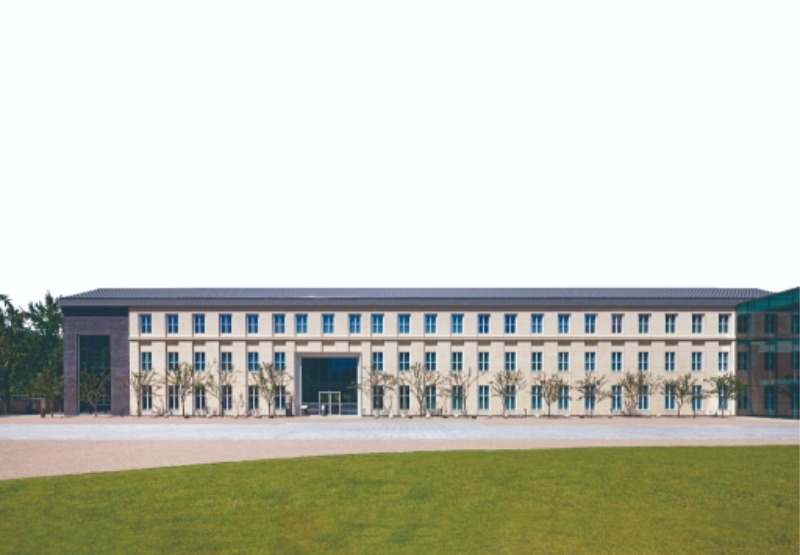
The façade of Building No. 1 seen from the courtyard of the Seoul Museum of Craft Art. The large playground of the former high school is preserved toa wide, inviting expanse. It is covered with decomposed granite soil, the original covering.
Courtesy of the Seoul Museum of Craft Art
The Seoul Museum of Craft Art (SeMoCA) provides an overview of the past and present of craft art. In addition to enhancing the public’s awareness of crafts, the displays are designed to stimulate visitors’ curiosity by showing how crafts are a part of our everyday lives.
The museum houses around 23,000 craft items. They attest to the evolution of multiple craft genres over the centuries and include state-designated cultural heritage artifacts. With permanent and special exhibitions and an array of programs for the general public, the museum has drawn a steady stream of visitors since its opening in November 2021. When COVID-19 precautions limited the number of visitors, the reservation rate exceeded 95 percent.
Joining nearby Joseon Dynasty palaces Gyeongbok Palace and Changdeok Palace, the National Museum of Modern and Contemporary Art, Seoul, and the National Folk Museum, SeMoCA adds to the cultural and historic bounty of downtown Seoul.
Historical Location
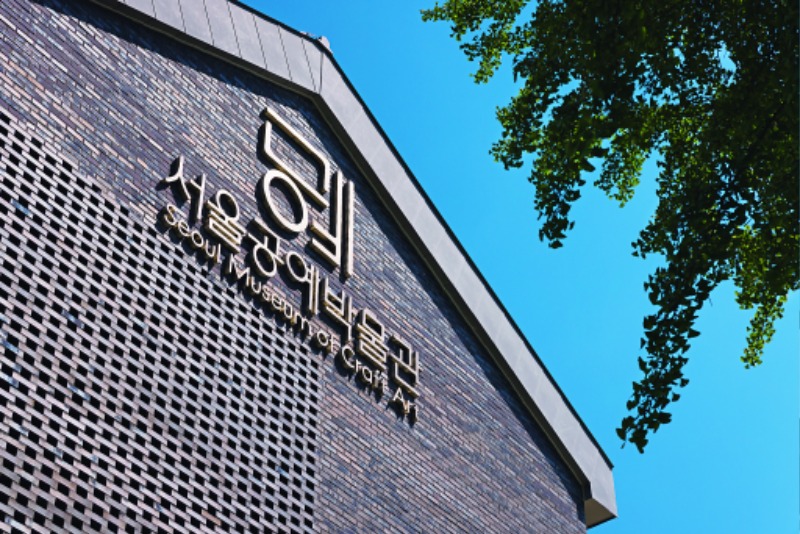
The design studio Kelita & Co. d the identity of SeMoCA by shaping the historical significance and architectural features of the site into the letters of the Korean alphabet.
Courtesy of Kelita & Co.
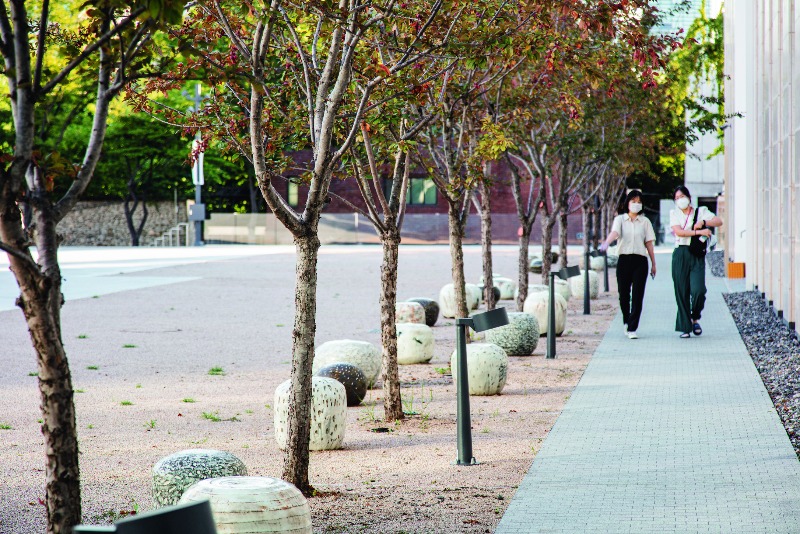
Stools resembling traditional earthenware jars line the front of Building No. 1, creating a popular space to sit and talk or simply enjoy the outdoors. They are the work of ceramic artist Lee Kang-hyo.
© Kim Jong-oh
The location and composition of the museum is deeply rooted in the Joseon Dynasty (1392–1910). On the site once stood a separate palace that King Sejong (r. 1418–1450) had built as a residence for his eighth son, Prince Yeongeung. Sejong later moved to the palace to spend his last years there. This is also where his successor, King Munjong (r. 1450–1452), was invested as king.
Consisting of several buildings, the palace was the private residence of princes and princesses before being substantially expanded by King Gojong (r. 1863–1907). From this time onwards, it was called Andong Byeolgung and functioned as a venue for royal ceremonies such as the wedding of Emperor Sunjong (r. 1907–1910), Gojong’s second son.
After 1910, the palace served as the residential quarters of court ladies before it was sold to a private buyer in 1936. At the time, the media bemoaned the sale, and the palace began to lose its original form and identity. After 1945, Pungmoon Girls’ High School occupied the location.
In 2014, the Seoul City Government set out toa dedicated exhibition space to promote the craft art industry. It purchased the former palace grounds in 2017, when the school relocated, renovated the five buildings on the site, and added a traditional Korean building and a reception building. Today, all seven structures are harmoniously connected, recreating the charm of the alleyways of bygone Seoul.
A Place to Relax
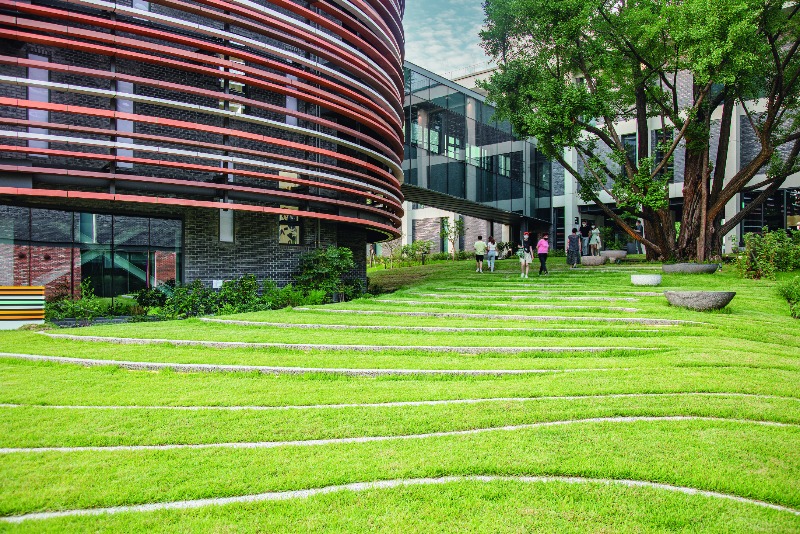
The inner garden of the Children’s Museum resembles an undulating hill, with successive concrete lines amplifying the visual effect. The area was designed by PARKKIM Landscape Architecture, represented jointly by Park Yoon-jin and Kim Jung-yoon.
© Kim Jong-oh
SeMoCA eschews boundary walls because it aspires to be a space open to everyone, as suggested by its slogan “Craft for All, Museum for All.” So, at lunch time, employees of nearby offices freely stroll among the buildings.
The garden’s beauty never wavers through the year, with its lacquer and bamboo trees, bush clover, hydrangeas, and sweetbriers, as well as plum trees and other flowering trees. The cylindrical terracotta exterior of the Children’s Museum represents harmony between tradition and modernity, and the building’s rooftop offers an open view over a grass-covered plaza.
Visitors come across works by well-known artisans as soon as they step into museum grounds. These include some thirty chairs by ceramic artist Lee Kang-hyo whose shapes are inspired by onggi (traditional earthenware jars). When the weather cooperates, couples and groups sit on these pieces. Standing in the inner garden is a tall, stately ginkgo tree, said to be more than four hundred years old. The stone chairs placed around it are the works of the stonemason Lee Jae-sun, and it is fun to explore the different types of stone from all over the country.
The creations of noted artisans adorn the exterior and interior of each building. The lobby of the Information Building is dominated by a large blue-green ceramic piece by Lee Hun-chung. Among the owners of his works is Hollywood star Brad Pitt. Other buildings feature works made of stones, glass, bamboo, or resin that were produced as part of the “s 9” project, conducted to celebrate the museum’s inauguration.
Everything about Craft
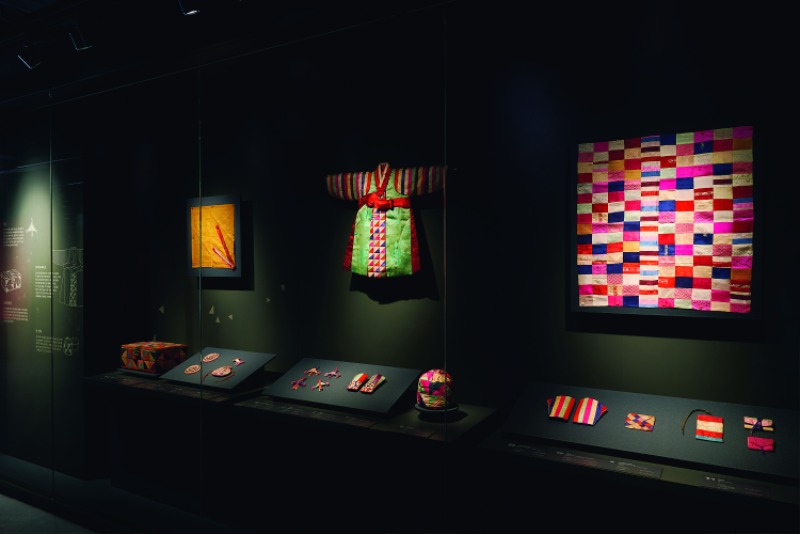
“Bojagi, Embracing Daily Life” is a permanent exhibition that presents history and daily life through embroidered works.
Counrtesy of the Seoul Museum of Craft Art
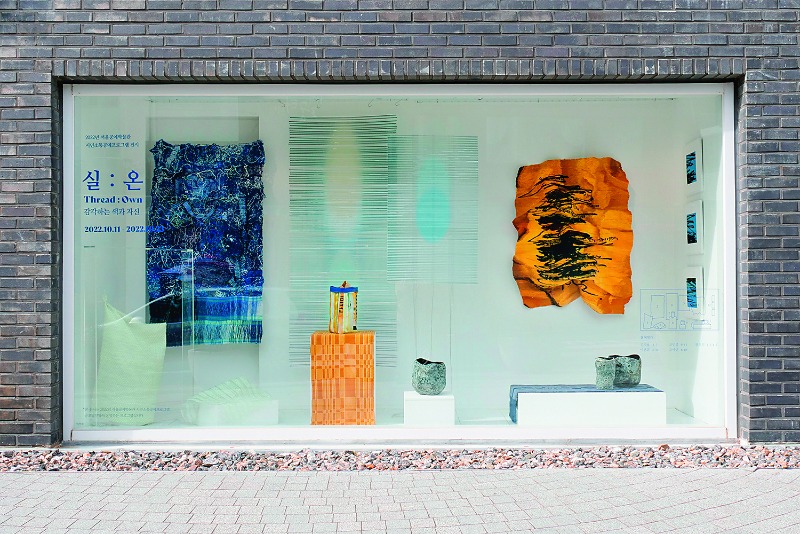
The “Craft Window” on the ground floor of Building No. 3 gives passersby a peek at museum holdings. This window display, “Thread & Own: Sensing Colors and Oneself,” presents colors associated with various emotions.
Counrtesy of the Seoul Museum of Craft Art
“Artisans – Making the Better World,” the permanent exhibition occupying Buildings 1 and 2, delves into the history of craft and features a wide variety of practical craft items from ancient to modern times that were designed to make daily life easier. The show helps visitors to realize how much time and effort an artisan must invest to complete each work.
The permanent exhibition in Building No. 3 is organized under two themes: “Embroidery in Bloom” and “Bojagi, Embracing Daily Life.” Collected here are the works donated by the late Huh Dong-wha, founder of the Korea Embroidery Museum, and his wife, Park Young-sook.
The couple bestowed Seoul City with more than five thousand items from their lifelong collection. Embroidery is a craft technique and means ofwith a long tradition. In the exhibition, embroidered folding screens are re-examined from a painter’s perspective, while the significance of patterns and different embroidery stitches are explained. Also on display is an assortment of bojagi (cloths used to wrap and carry things), ranging from lavishly embroidered ones for court use to plain ones for day-to-day use.
Numerous special exhibitions on themes closely related to everyday life, starting with a display of earrings to mark the opening of the museum, continue to pique public curiosity. “Crafts in Fashion,” held earlier this year, explored the relation between craft art and the works of Korea’s pioneering fashion designers. “Reference Room for Inspiration,” open for viewing until the end of May, brought attention to the work of wood artisan Choi Seung-chun, who draws inspiration from birds, trees, and flowers.
Apart from the exhibition space, SeMoCA offers facilities in which visitors can appreciate craft in different ways, including Korea’s only library dedicated to crafts. With all the necessary elements in place, it is flourishing as a new hive of cultural activity in Seoul.
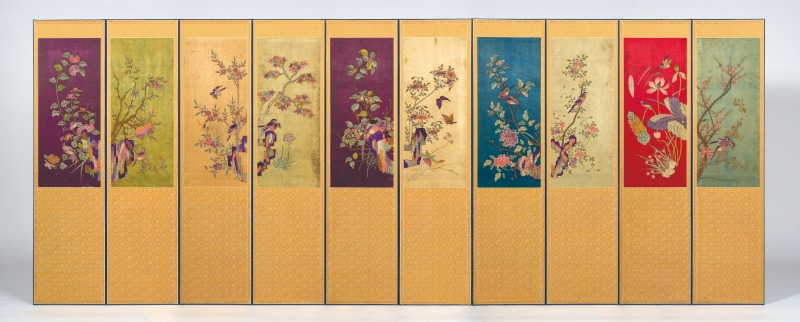
A folding screen embroidered with flowers and birds is part of the permanent exhibition “Embroidery in Bloom.” It re-examines this type of folding screen from a painter’s perspective.
Counrtesy of the Seoul Museum of Craft Art